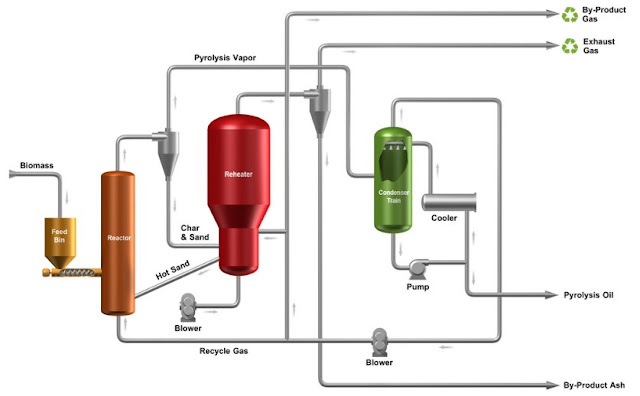Construction of the Cote Nord biocrude production facility starts in Quebec
Construction has been initiated on a
10.5 million gallon (approximately, 40 Ml) per year biocrude production facility
located in Port-Cartier (Quebec). The beginning of the works for the Cote Nord project,
a biorefinery that will produce pyrolysis oil from forest residues, was
announced by Ensyn on July 13th
(see press
release). The project is being developed by Ensyn, Arbec Forest Products Inc. and Groupe Rémabec and is located adjacent to
an Arbec’s sawmill on the north shore of the St. Lawrence Seaway. The facility
is scheduled to be complete by the end of 2017 and is the first of several plants
being developed by Ensyn to expand the production of biocrude for energy
applications.
The Government of Canada suppors the project
through a $27-million investment from Sustainable
Development Technology Canada and $17.5 million from Natural Resources
Canada’s Investments
in Forest Industry Transformation program. For its part, the Government of
Quebec contributes $32 million to the project, including $10 million from Investissement Québec. In March 2016, to ensure the fibre supply, the Quebec Ministry of
Forests, Wildlife and Parks reserved 170,000 green tonnes of residues from
government forests for the plant.
Utilizing Ensyn’s proprietary RTP® technology,
the plant will convert approximately 65,000 dry metric tons per
year of slash and other forest residues from local sources to biocrude. This
product will be sold to customers in the Northeastern US and in Eastern Canada
for heating purposes and as a feedstock for petroleum refineries to produce green
transportation fuels. The RTP conversion unit is being engineered by Envergent
Technologies LLC, a joint venture between Ensyn and Honeywell UOP.
Figure 1. Simplified RTP process flow diagram
The RTP process efficiently converts a wide
range of woody biomass feedstocks (hardwoods and softwoods, forest residues and
agricultural residues) to valuable liquid fuels and chemicals. It is based on
the rapid thorough contact of hot flowing sand with biomass, which quickly
fragments the solid feedstock into vapors, gases and char. The vapors are rapidly quenched and recovered
as a light biocrude, while the gases and char flow together to a second vessel
where the sand is reheated and recirculated back to the conversion unit. Heat is recovered from the gas and char and
used to supply heat for various units of the RTP process. The by-product gas is
used as a fuel for complementary applications such as biomass drying or electrical
power generation, whereas the char is typically consumed in its entirety in the
reheater to provide the heat required to drive the process. The RTP process does not require expensive complex
catalyst systems, hydrogen or high pressure. These factors, coupled with very
short processing time, translate to attractive capital and operating costs.




